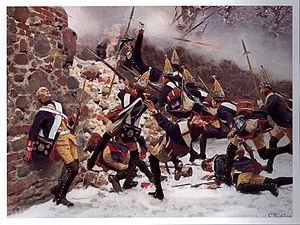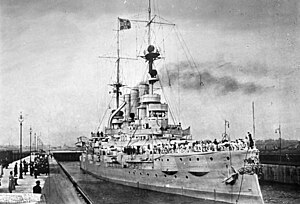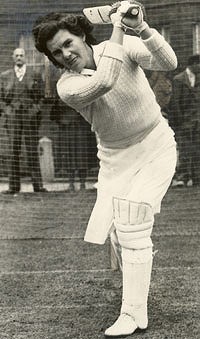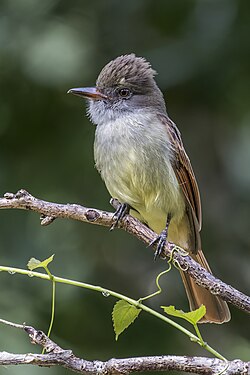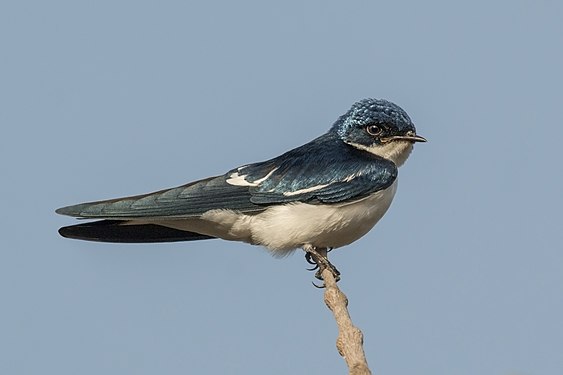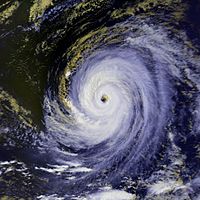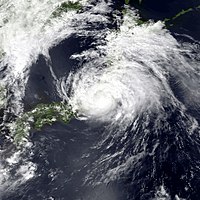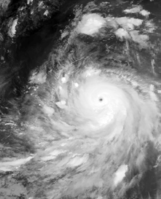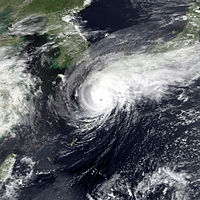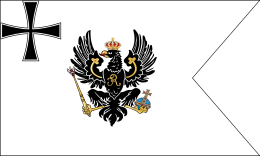Wikipedia:Wikipedia Signpost/Single/2017-09-06
What happened at Wikimania?
Wikimania 2017 was 9-13 August. Many people used the conference as an opportunity to participate, speak up, learn, engage, and form collaborations. The challenge following the event is to capture the momentum and meaning of it all while it is still fresh. The Signpost would like to publish all the news and updates from the event, but you and your colleagues have not yet written your articles about the event!
Will you please share what you learned at Wikimania in the form of a news story for The Signpost? Write your draft now, but feel free to submit your story anytime. As a conference which is largely volunteer organized, it takes some time to categorize all the media produced at the conference and publish all the lasting ideas which people had there. Over the next few weeks the professional videographers will be uploading the official videos of the keynote talks and some other presentations. The majority of talks either were not recorded, or were recorded by volunteers who will share the videos on their own time. Individual presenters may or may not share their slides or other materials.
Did you present at Wikimania? If so, and you want to reach an even larger audience, consider turning your talk and the discussions you had about your presentation into an article for The Signpost. Did you attend a talk at Wikimania that you found meaningful? Then please consider contacting the presenter, doing a 2-3 question follow up interview with them, then publishing your response to their presentation in The Signpost. Did you and another person have a conversation at the conference that you want to share? Again, The Signpost is a record of current thought in the Wikipedia community as we present it to each other and to the non-wiki outside world. If you can draft at least 5 sentences in the manner of a journalist and will agree to go through a traditional editorial process, then congratulations, you qualify to be a freelance writer for The Signpost.
The impact of Wikimania does not end at the in-person event. Please, everyone, ping everyone else who did anything significant at Wikimania and offer them the option to publish their project, idea, discussion, controversy, opinion, argument, conspiracy theory, rant, fan letter, or other journalistic material in The Signpost. Writers get a relevant audience, entry into the public record, and sweet community discussion.
To submit drafts or proposals, or for further information, visit the Submissions desk.
Basselpedia; WMF Board of Trustees appointments
Bassel Khartabil, a Palestinian Syrian open-source software developer and Wikimedia content contributor, has been confirmed as dead by his wife as of 31 July 2017. From the Wikimedia Foundation blog, "Bassel was a leader, advocate, and member of many open culture communities; he had a pivotal role in the development of the open source movement in the Arabic-speaking world. In addition to his advocacy for and contributions to Wikimedia—many of which were made anonymously—he was project lead and public affiliate for Creative Commons Syria, a friend of the Global Voices community, a free software advocate and contributor to Mozilla, the founder of Aiki Lab hackerspace in Damascus, and much more."
Bassel had been arrested on 15 March 2012 and held in detention until September 2015 when his communication was cut and the Syrian prison system ceased communication about him. The Wikimedia community and others participated in a campaign asking #WhereIsBassel. The recent announcement confirmed that Bassel was missing because he had been executed outside of any legal process for activities including his engagement with Wikipedia and similar educational projects. A close friend of Bassel's remarked to Wikipedia that Bassel continually hid his on-wiki editing history and accounts for fear of his safety, so Wikipedians cannot review his work history.
At Wikimania 2017 in Montreal an Editathon for Bassel celebrated his life. There was also a Basselpedia Party at which attendees shared what they knew of Bassel and discussed his work and the circumstances of his death. Many media outlets reported on Bassel's death. Wikipedia participants wishing to demonstrate condolences may edit the Wikipedia articles about Bassel and his work, read FreeBassel.org for news on next steps, or take action as they deem respectful in his memory. B
Board of Trustees appointments
On 11 August 2017 the Wikimedia Foundation Board of Trustees confirmed the appointments of three community-selected trustees: María Sefidari and Dariusz Jemielniak (both reappointed), as well as James Heilman, former Trustee (controversially removed December 2015, see previous Signpost coverage). Christophe Henner and María Sefidari were reappointed as Chair and Vice Chair respectively. Terms for the community-selected Trustees last for three years. E
Brief notes
- Wikimania 2017 was held on 9–13 August (did you attend?)
- Jibber-jabbering with Wikimedians: Sebastian Wallroth has started a podcast WikiJabber (meta:WikiJabber) where he discusses "Wikipedia, life and all the rest" with one or more guests. There is also a German language version WikiStammtisch (de:Wikipedia:WikiStammtisch).
- Milestones: On August 9, 2017, the Cebuano Wikipedia hit its five-millionth article. Other milestones reached include 2,000 articles for the Hawaiian Wikipedia.
Warfighters and their tools or trees and butterflies: take your pick of the best of Wikipedia
(created by Ninaras (via Flickr) and nominated by Paul_012)
Featured articles
24 featured articles were promoted.
- Air Chief Marshal Donald Hardman (nominated by Ian Rose) was a senior Royal Air Force commander. He began his flying career as a fighter pilot in World War I, achieving nine victories to become an ace. During World War II, Hardman held senior staff and operational posts. He was Chief of the Air Staff (CAS) of the Royal Australian Air Force (RAAF) from 1952 to 1954, after which he served as a member of the British Air Council until retiring in 1958. Hardman joined the Royal Flying Corps in 1917. He flew Sopwith Dolphins with No. 19 Squadron, earning the Distinguished Flying Cross for his fighting skills. Between the wars he served with No. 31 Squadron in India and No. 216 Squadron in Egypt. A wing commander at the outbreak of World War II, Hardman was attached to the Air Ministry for several years before being posted in 1944 to South East Asia, where he commanded No. 232 (Transport) Group during the Burma campaign. He was appointed an Officer of the Order of the British Empire in 1940 and a Companion of the Order of the Bath in 1945, and was also mentioned in despatches. Finishing the war an air commodore, Hardman served successively as Assistant Chief of the Air Staff, Commandant of RAF Staff College, Bracknell, and Air Officer Commanding-in-Chief of Home Command, prior to becoming RAAF CAS in January 1952. He was appointed a Knight Commander of the Order of the Bath the same year. As CAS he was responsible for reorganising the RAAF's geographically based command-and-control system into a functional structure. Returning to Britain, he became Air Member for Supply and Organisation in May 1954, and was promoted to air chief marshal the following year. He was raised to Knight Grand Cross of the Order of the British Empire in January 1958, shortly before his retirement.
- The Walt Disney World Railroad (nominated by Jackdude101) is a 3-foot (914 mm) narrow-gauge heritage railroad and attraction located within the Magic Kingdom theme park of Walt Disney World in Bay Lake, Florida, United States. Its route is 1.5 miles (2.4 km) in length and encircles most of the park, with train stations in three different park areas. The rail line, constructed by WED Enterprises, operates with four historic steam locomotives originally built by Baldwin Locomotive Works. It takes about 20 minutes for each train to complete a round trip on the WDWRR's main line. On a typical day, the railroad has two trains in operation; on busy days, it has three trains. Since its opening on October 1, 1971, the railroad has become one of the world's most popular steam-powered railroads, with about 3.7 million passengers a year.
- Banksia serrata (nominated by Gderrin & Cas Liber) is a species of woody shrub or tree of the genus Banksia in the family Proteaceae. Native to the east coast of Australia, it is found from Queensland to Victoria with outlying populations on Tasmania and Flinders Island. Commonly growing as a gnarled tree up to 16 m (50 ft) in height, it can be much smaller in more exposed areas. This Banksia species has wrinkled grey bark, shiny dark green serrated leaves and large yellow or greyish-yellow flower spikes appearing over summer. The flower spikes, or inflorescences, turn grey as they age and pollinated flowers develop into large, grey, woody seed pods called follicles. B. serrata is one of the four original Banksia species collected by Sir Joseph Banks in 1770, and one of four species published in 1782 as part of Carolus Linnaeus the Younger's original description of the genus.
- The pigeon guillemot (nominated by RileyBugz & Sabine's Sunbird) is a species of bird in the auk family, Alcidae. Though it has five subspecies; all subspecies, when in breeding plumage, are dark brown with a black iridescent sheen, with a distinctive wing patch broken by a brown-black wedge. Its non-breeding plumage has a mottled grey and black upperparts and white underparts. The long bill is black, as are the claws. The legs, feet, and inside of the mouth are red. It closely resembles the black guillemot, which is slightly smaller and lacks the dark wing wedge present in the pigeon guillemot. Combined, the two form a superspecies. This seabird is found on North Pacific coastal waters, from Siberia through California to Alaska. The pigeon guillemot breeds and sometimes roosts on rocky shores, cliffs, and islands close to shallow water. In the winter, some birds move slightly south in the northern-most part of their range in response to advancing ice and migrate slightly north in the southern part of their range, generally preferring more sheltered areas. This species feeds on small fish and marine invertebrates, mostly near the sea floor, that it catches by pursuit diving. Pigeon guillemots are monogamous breeders, nesting in small colonies close to the shore. They defend small territories around a nesting cavity, in which they lay one or two eggs. Both parents incubate the eggs and feed the chicks. After leaving the nest the young bird is completely independent of its parents. Several birds and other animals prey on the eggs and chicks. The pigeon guillemot is considered to be a least concern species by the International Union for Conservation of Nature (IUCN). Threats to this bird include climate change, introduced mammalian predators, and oil spills.
- The Blue Flame (play) (nominated by RL0919) is a four-act play written by George V. Hobart and John Willard, who revised an earlier version by Leta Vance Nicholson. In 1920, producer Albert H. Woods staged the play on Broadway and on tour across the United States. Ruth Gordon, the main character, is a religious young woman who dies and is revived by her scientist fiancé as a soulless femme fatale. She seduces several men and involves them in crimes, including drug use and murder. In the final act, her death and resurrection are revealed to be a dream. The production starred Theda Bara, a popular silent film actress who was known for playing similar roles in movies. Critics panned the play, ridiculing the plot, dialog, and Bara's acting. Theater historian Ward Morehouse called it "one of the worst plays ever written". Bara's movie fame drew large crowds to theaters, and the play was a commercial success, breaking attendance records at some venues. Ruth Gordon was Bara's only Broadway role, and The Blue Flame was one of her last professional acting projects.
- True Detective (season 1) (nominated by Mike Christie & DAP), an American anthology crime drama television series created by Nic Pizzolatto, premiered on January 12, 2014, on the premium cable network HBO. The principal cast consisted of Matthew McConaughey, Woody Harrelson, Michelle Monaghan, Michael Potts, and Tory Kittles. The season comprised eight episodes, and its initial airing concluded on March 9, 2014. As an anthology, each True Detective season has its own self-contained story, following a disparate set of characters in various settings. Constructed as a nonlinear narrative, season one focuses on Louisiana State Police homicide detectives Rustin "Rust" Cohle (McConaughey) and Martin "Marty" Hart (Harrelson), who investigated the murder of prostitute Dora Lange in 1995. Seventeen years later, they must revisit the investigation, along with several other unsolved crimes. True Detective's first season explores themes of philosophical pessimism, masculinity, and Christianity; critics have analyzed the show's portrayal of women, its auteurist sensibility, and the influence of comics and weird horror fiction on its narrative. The series received positive reviews from critics and was cited as one of the strongest dramas of the 2014 television season. It was a candidate for numerous television awards, including a Primetime Emmy Award nomination for Outstanding Drama Series and a Golden Globe Award for Best Miniseries or Television Film, and won several other honors for writing, cinematography, direction, and acting.
- SMS Deutschland (1904) (nominated by Parsecboy) was the first of five Deutschland-class pre-dreadnought battleships built for the German Kaiserliche Marine (Imperial Navy). The ship was armed with a main battery of four 28 cm (11 in) guns in two twin turrets. She was built at the Germaniawerft shipyard in Kiel, where she was launched in November 1904. She was commissioned on 3 August 1906, a few months ahead of HMS Dreadnought. The latter, armed with ten large-caliber guns, was the first of a revolutionary new standard of "all-big-gun" battleships that rendered Deutschland and the rest of her class obsolete. Deutschland served as the flagship of the High Seas Fleet until 1913, when she was transferred to the II Battle Squadron. With the outbreak of World War I in July 1914, she and her sister ships were tasked with defending the mouth of the Elbe and the German Bight from possible British incursions. Deutschland and the other ships of the II Battle Squadron participated in most of the large-scale fleet operations in the first two years of the war, culminating in the Battle of Jutland on 31 May – 1 June 1916. Late on the first day of the battle, Deutschland and the other pre-dreadnoughts briefly engaged several British battlecruisers before retreating. After the battle, Deutschland and her three surviving sisters were assigned to coastal defense duties. By 1917, they had been withdrawn from combat service completely, disarmed, and tasked with auxiliary roles. Deutschland was used as a barracks ship in Wilhelmshaven until the end of the war. She was struck from the naval register on 25 January 1920, sold to ship breakers that year, and broken up for scrap by 1922.
- In the Battle of Leuthen, (nominated by auntieruth) fought on 5 December 1757, Frederick the Great's Prussian army used maneuver and terrain to decisively defeat a much larger Austrian force commanded by Prince Charles of Lorraine and Count Leopold Joseph von Daun, thus ensuring Prussian control of Silesia during the Third Silesian War (part of the Seven Years' War). The battle was fought at the Silesian town of Leuthen. By exploiting the training of his troops and his superior knowledge of the terrain, Frederick created a diversion at one end of the battlefield, and moved most of his small army behind a series of low hillocks. The surprise attack in the oblique order on the unsuspecting Austrian flank baffled Prince Charles; the Prince took several hours to realize that the main action was to his left, and not to his right. Within seven hours, the Prussians destroyed the Austrian force, erasing any advantage the Austrians had gained throughout the summer and fall of campaigning. Within 48 hours, Frederick had laid siege to Breslau, which resulted in that city's surrender on 19–20 December. Leuthen was the last battle at which Prince Charles commanded the Austrian Army, before his sister-in-law, Empress Maria Theresa, appointed him as governor of the Habsburg Netherlands and placed Leopold Joseph von Daun in command of the army. The battle also established beyond doubt Frederick's military reputation in European circles. After Rossbach (5 November), the French had refused to participate further in Austria's war with Prussia; after Leuthen (5 December), Austria could not.
- Benedetto Pistrucci (nominated by Wehwalt) was an Italian gem-engraver, medallist and coin engraver, probably best known for his Saint George and the Dragon design for the British sovereign coin. Pistrucci was commissioned by the British government to create the large Waterloo Medal, a project which took him thirty years to complete. Talented but temperamental, Pistrucci refused to copy the work of other artists. When in 1823 George IV demanded that an unflattering portrait of him on the coinage be changed with a new likeness to be based on the work of Francis Chantrey, Pistrucci refused and was nearly sacked. The Mint did not dismiss him, lest the money already spent on the Waterloo Medal be wasted. Pistrucci kept his place with the Mint for the rest of his life, eventually completing the Waterloo Medal in 1849, though because of its great size it could not be struck. After Pistrucci's death, the George and Dragon design was restored to the sovereign coin, and is still used today.
- Mercy Point (nominated by Aoba47) was an American science fiction medical drama that aired for one season on United Paramount Network (UPN) from October 6, 1998, to July 15, 1999. With an ensemble cast led by: Joe Morton, Maria del Mar, Alexandra Wilson, Brian McNamara, Salli Richardson, Julia Pennington, Gay Thomas, Jordan Lund, and Joe Spano, the series takes place in a 23rd-century hospital space station located in deep space and revolves around its doctors and nurses. Initially focused on ethical and medical cases, the storylines gradually shifted toward focusing on the characters' personal relationships to better fit UPN's primarily teen demographic.
- The Kaiman-class (nominated by Peacemaker67) were high-seas torpedo boats built for the Austro-Hungarian Navy between 1904 and 1910. A total of 24 boats were built by three shipbuilding companies. Yarrow Shipbuilders built the lead ship, Stabilimento Tecnico Triestino of Trieste built 13 boats, and Ganz & Danubius constructed the remaining 10 boats at their shipyards at Fiume. The class was considered to be a very successful design, and all boats saw extensive active service during World War I, undertaking a range of tasks, including escort duties, shore bombardments and minesweeping. All survived, although several were damaged by naval mines and collisions. One was torpedoed and badly damaged by a French submarine, and two sank an Italian submarine. All the boats were transferred to the Allies and scrapped at the end of the war, except for four that were allocated to the navy of the newly created Kingdom of Serbs, Croats and Slovenes. These were discarded and broken up between 1928 and 1930..
- The Getaway (1972 film) (nominated by Bluesphere) is a 1972 American neo-noir crime film directed by Sam Peckinpah. The screenplay by Walter Hill is based on the eponymous 1958 novel by Jim Thompson. The film follows imprisoned mastermind robber Carter "Doc" McCoy (McQueen), whose wife Carol (MacGraw) conspires for his release on the condition they rob a bank in Texas. A double-cross follows the crime and the McCoys are forced to flee for Mexico with the police and criminals in hot pursuit. Principal photography commenced on February 7, 1972, on location in Texas. It was scored by Quincy Jones, who was later nominated for a Golden Globe Award for Best Original Score. The Getaway was released on December 13, 1972. A box office hit earning over $36 million, it was the second highest-grossing film of the year, and was also one of the most financially successful productions of Peckinpah's and McQueen's careers. Upon release it got a negative reception, with Vincent Canby of The New York Times and Roger Ebert of the Chicago Sun-Times both giving the film indifferent reviews. Canby described it as "aimless", while Ebert complained that the story was contrived, calling it "a big, glossy, impersonal mechanical toy". Nevertheless, the film was well received in retrospective reviews and was among the heist films considered the best. In 1994, a remake was released to generally negative reviews, directed by Roger Donaldson and starring Alec Baldwin and Kim Basinger.
- Alan Bush (nominated by Brianboulton) was a British composer, pianist, conductor, teacher and political activist. A committed communist, his uncompromising political beliefs were often reflected in his music. He composed prolifically across a range of genres, but struggled through his lifetime for recognition from the British musical establishment, which largely ignored his works. A two-year period in Berlin in 1929–31 cemented Bush's political convictions and moved him from the mainstream Labour Party to the Communist Party of Great Britain which he joined in 1935. He wrote several large-scale works in the 1930s, and was heavily involved with workers' choirs for whom he composed pageants, choruses and songs. His pro-Soviet stance led to a temporary ban on his music by the BBC in the early years of the Second World War, and his refusal to modify his position in the postwar Cold War era led to a more prolonged semi-ostracism of his music. As a result, the four major operas he wrote between 1950 and 1970 were all premiered in East Germany. In his prewar works, Bush's style retained what commentators have described as an essential Englishness, but was also influenced by the avant-garde European idioms of the inter-war years. During and after the war he began to simplify this style, in line with his Marxist-inspired belief that music should be accessible to the mass of the people. Despite the difficulties he encountered in getting his works performed in the West he continued to compose until well into his eighties. He taught composition at the Royal Academy of Music for more than 50 years, published two books, was the founder and long-time president of the Workers' Music Association, and served as chairman and later vice-president of the Composers' Guild. His contribution to musical life was slowly recognised, in the form of doctorates from two universities and numerous tribute concerts towards the end of his life. He died aged 94 in 1995.
- A Wizard of Earthsea (nominated by Vanamonde) is a young adult fantasy novel written by the American author Ursula K. Le Guin, first published by the small press Parnassus in 1968. Regarded as a classic of fantasy and children's literature, the novel has been widely influential within the genre of fantasy. Set in the fictional archipelago of Earthsea, the story centers around a young mage named Ged, born in a village on the island of Gont. The book has often been described as a Bildungsroman or coming of age story, as it explores Ged's process of learning to cope with power and come to terms with death. The novel also carries Taoist themes about a fundamental balance in the universe of Earthsea, which wizards are supposed to maintain, closely tied to the idea that language and names have power to affect the material world and alter this balance. Although the structure of the story is similar to that of a traditional epic, critics have also described it as subverting this genre in many ways, such as by making the protagonist dark-skinned, in comparison to more typical white-skinned heroes. A Wizard of Earthsea received highly positive reviews, initially as a work for children, and later among a general audience as well. It won the Boston Globe–Horn Book Award in 1969 and was one of the final recipients of the Lewis Carroll Shelf Award in 1979.
- Hurricane Andrew (nominated by 12george1) (1992) was an Atlantic hurricane, the most destructive one ever in Florida. Named as a tropical storm on August 17, it hit the northwestern Bahamas six days later at Category 5 strength, leaving 1,700 people homeless, killing four, and disrupting the transport, communications, water, sanitation, agriculture, and fishing sectors. It struck Florida on August 24 with sustained wind speeds as high as 165 mph (270 km/h). In the city of Homestead in Miami-Dade County, it stripped many homes of all but their concrete foundations. Statewide, Andrew destroyed or damaged over 164,000 homes, killed 44 people, and left a record $25 billion in damage. A facility housing Burmese pythons was destroyed, releasing them into the Everglades, where they now number up to 300,000. The hurricane destroyed oil platforms in the Gulf of Mexico before hitting Louisiana, where it downed 80% of the trees in the Atchafalaya River Basin, devastated agriculture, and caused 17 deaths. The storm spawned at least 28 tornadoes along the Gulf Coast, mostly in Alabama, Georgia, and Mississippi. In total, Andrew caused $26.5 billion in damage and left 65 people dead.
- The rainbow pitta (nominated by Sabine's Sunbird) is a small passerine bird in the pitta family Pittidae, endemic to northern Australia. The species is most closely related to the superb pitta of Manus Island. A colourful bird, it has a velvet-black head with chestnut stripes above the eyes, olive-green upper parts, black underparts, a bright red belly and an olive-green tail. An Australian endemic, the rainbow pitta lives in the monsoon forests, as well as some drier eucalypt forests. It is a secretive and shy bird. The diet consists mainly of insects, arthropods and small vertebrates. Pairs defend territories and breed during the rainy season, as this time of year provides the most food for nestlings. The female lays three to four eggs with blotches inside its large domed nest. Both parents defend the nest, incubate the eggs and feed the chicks. Although the species has a small global range it is locally common and the International Union for Conservation of Nature (IUCN) has assessed it as being of least concern.
- The black-throated loon (nominated by RileyBugz) is a migratory aquatic bird found in the Northern Hemisphere, primarily breeding in freshwater lakes in northern Europe and Asia. It winters along sheltered, ice-free coasts of the north-east Atlantic Ocean and the eastern and western Pacific Ocean. The black-throated loon measures about 70 cm (28 in) in length and can weigh anywhere from 1.3 to 3.4 kilograms (2.9 to 7.5 lb). The timing of the breeding season is variable; in the southern part of its range, this loon starts breeding in April, whereas in the northern portion, it waits until after the spring thaw. It builds an oval-shaped nest that measures about 23 centimetres (9.1 in) across, either near the breeding lake or on vegetation emerging from it. The black-throated loon usually lays a clutch of two, rarely one or three, brown-green eggs with dark splotches. Eventually, the chick hatches, and is fed a diet of small fish and invertebrates. This contrasts with the mostly fish diet of the adult. To catch this food, it forages by itself or in pairs, very rarely foraging in groups. It dives from the water, going no deeper than 5 metres (16 ft). Most dives are successful. Overall, the population of this loon is declining, although the International Union for the Conservation of Nature (IUCN) still rates it as least concern, because the population decline is not rapid enough. The black-throated loon is protected under both the Migratory Bird Treaty Act of 1918 and the Agreement on the Conservation of African-Eurasian Migratory Waterbirds.
- The 1998 NFC Championship Game (nominated by Helltopay-27) was a National Football League (NFL) game played on January 17, 1999, to determine the National Football Conference (NFC) champion for the 1998 NFL season. The visiting Atlanta Falcons defeated the heavily favored Minnesota Vikings 30–27 in sudden death overtime to win their first conference championship and advance to the franchise's first Super Bowl appearance. As a result of their loss, the Vikings were eliminated from the playoffs and became the first team in the history of the NFL to compile a regular season record of 15–1 and not win the Super Bowl.
- Louise Bryant (nominated by Finetooth) was an American feminist, political activist, and journalist best known for her sympathetic coverage of Russia and the Bolsheviks during the Russian Revolution. Bryant, who married writer John Reed, her second husband, in 1916, wrote about Russian leaders such as Katherine Breshkovsky, Maria Spiridonova, Alexander Kerensky, Vladimir Lenin, and Leon Trotsky. Her news stories, distributed by Hearst during and after her trips to Petrograd and Moscow, appeared in newspapers across the United States and Canada in the years immediately following World War I. A collection of articles from her first trip was published in book form as Six Red Months in Russia in 1918. During the next year, she defended the revolution in testimony before the Overman Committee, a Senate subcommittee established to investigate Bolshevik influence in the United States. Later in 1919, she undertook a nationwide speaking tour to encourage public support of the Bolsheviks and to denounce armed U.S. intervention in Russia.
- John C. Breckinridge (nominated by Display name 99) was an American lawyer, politician, and soldier. He represented Kentucky in both houses of Congress and became the 14th and youngest-ever Vice President of the United States, serving from 1857 to 1861. He served in the U.S. Senate during the outbreak of the American Civil War, but was expelled after joining the Confederate Army. He was appointed Confederate Secretary of War in 1865.
- The Canadian Indian residential school system (nominated by Dnllnd) was a network of boarding schools for Indigenous peoples.The network was funded by the Canadian government's Department of Indian Affairs and administered by Christian churches. The school system was created for the purpose of removing children from the influence of their own culture and assimilating them into the dominant Canadian culture. Over the course of the system's more than hundred year existence, about 30%, or roughly 150,000, of Indigenous children were placed in residential schools nationally. At least 6,000 of these students are estimated to have died while residents. The residential school system harmed Indigenous children significantly by removing them from their families, depriving them of their ancestral languages, exposing many of them to physical and sexual abuse, and forcibly enfranchising them. Disconnected from their families and culture and forced to speak English or French, students who attended the residential school system often graduated unable to fit into either their communities or Canadian society. It ultimately proved successful in disrupting the transmission of Indigenous practices and beliefs across generations. The legacy of the system has been linked to an increased prevalence of post-traumatic stress, alcoholism, substance abuse, and suicide, which persist within Indigenous communities. On June 11, 2008, Prime Minister Stephen Harper offered a public apology on behalf of the Government of Canada and the leaders of the other federal parties in the Canadian House of Commons.
- The Beringian wolf (nominated by William Harris) is an extinct type of wolf that lived during the Ice Age. It inhabited what is now modern-day Alaska, the Yukon, and northern Wyoming. The Beringian wolf is an ecomorph of the gray wolf. It has been determined that these wolves are morphologically distinct from modern North American wolves and genetically basal to most modern and extinct wolves. The Beringian wolf has not been assigned a subspecies classification and its relationship with the European cave wolf (Canis lupus spelaeus) is not clear. The Beringian wolf was similar in size to the modern Yukon wolf but more robust and with stronger jaws and teeth, a broader palate, and larger carnassial teeth relative to its skull size. The unique adaptation of the skull and dentition of the Beringian wolf allowed it to produce relatively large bite forces, grapple with large struggling prey, and therefore to predate and scavenge on Pleistocene megafauna. The Beringian wolf preyed most often on horse and steppe bison, and also on caribou, mammoth, and woodland musk ox. At the close of the Ice Age, with the loss of cold and dry conditions and the extinction of much of its prey, the Beringian wolf became extinct. The extinction of its prey has been attributed to the impact of climate change, competition with other species, including humans, or a combination of both factors. In 2016 a study showed that some of the wolves now living in remote corners of China and Mongolia share a common maternal ancestor with one 28,000-year-old eastern Beringian wolf specimen.
- The black stork (nominated by Cas Liber & Adityavagarwal) is a large bird in the stork family Ciconiidae. Measuring on average 95 to 100 cm (37 to 39 in) from beak tip to end of tail with a 145-to-155 cm (57-to-61 in) wingspan, the adult black stork has mainly black plumage, with white underparts, long red legs and a long pointed red beak. A widespread, but uncommon, species, it breeds in scattered locations across Europe (predominantly in Spain, and central and eastern parts), and Asia to the Pacific Ocean. It is a long-distance migrant, with European populations wintering in tropical Sub-Saharan Africa, and Asian populations in the Indian subcontinent. When migrating between Europe and Africa, it avoids crossing the Mediterranean Sea and detours via the Levant in the east or the Strait of Gibraltar in the west. An isolated, non-migratory, population occurs in Southern Africa.
- Steve Biko (nominated by Midnightblueowl & Vanamonde) was a South African Xhosa anti-apartheid activist. Fighting racial segregation and white-minority rule in South Africa, Biko was at the forefront of the grassroots Black Consciousness Movement during the late 1960s and 1970s. Frustrated by the domination of white liberals in the anti-apartheid movement, he became a leading figure in the creation of the South African Students' Organisation in 1968. An African nationalist and African socialist, he was influenced by Frantz Fanon and the African-American Black Power movement. He promoted its slogan "black is beautiful", believing that black people needed to rid themselves of any sense of racial inferiority. In 1972, he helped found the Black People's Convention to spread these ideas among the wider population. Though the government banned Biko in 1973, he remained politically active. He was arrested in August 1977 and severely beaten by state security officers, resulting in his death. One of the earliest icons of the movement against apartheid, Biko is regarded as a political martyr.
Featured lists
14 featured lists were promoted this week.
- The FA Community Shield (nominated by Bloom6132) is an annual association football match organised by the Football Association and presently contested between the champions of the Premier League and the winners of the FA Cup. In the event where a club achieves the domestic double, it will go on to face the league runners-up instead. The match is played every August as the "traditional curtain-raiser" to the new English domestic football season. Since 1974, all but seven of the matches have been held at either the original or new Wembley stadiums. Stamford Bridge, which was where the inaugural Charity Shield was played in 1908, has hosted the second-most finals with 11. Manchester United holds the record for the most victories, winning the competition 21 times since its inception. They also hold the distinction of having the most appearances (30) and most losses (9). Although the Shield has had its share of historical moments – from Eric Cantona's first career hat-trick in 1992, to Manchester United's first loss of 1999 ending a streak of 33 consecutive games without a defeat – it has been dismissed as a ceremonial friendly that is not on par with other domestic honours in terms of prestige.
- Nani filmography (nominated by Pavanjandhyala) Nani is an Indian film actor and producer who works predominantly in Telugu cinema and appears in a few Tamil-language films. He made his acting debut in Ashta Chamma. After Ashta Chamma's commercial success, Nani played the lead roles in three Telugu films in the next two years: Ride (2009), Snehituda... (2009) and Bheemili Kabaddi Jattu (2010). In 2011, Nani collaborated with B. V. Nandini Reddy on the romantic comedy Ala Modalaindi. The same year, he made his Tamil cinema debut with Anjana Ali Khan's Veppam. The following year, Nani collaborated with S. S. Rajamouli and Gautham Menon on the Telugu-Tamil bilingual Eega and the romance film Yeto Vellipoyindhi Manasu respectively. The former earned Nani an award in the Best Hero category at the 2013 Toronto After Dark Film Festival. He received the Nandi Award for Best Actor for his performance in Yeto Vellipoyindhi Manasu. Nani ventured into film production in 2013 as a co-producer for the film D for Dopidi. He faced three box office failures in the upcoming years. Nani termed it a "low phase" in his career and worked on the "planning of films and the timing of their release". He then played the lead role in Nag Ashwin's Yevade Subramanyam (2015). Nani later starred in a comedy film Bhale Bhale Magadivoy (2015). It was the actor's first blockbuster success, and earned him the Critics Award for Best Actor - South at the 63rd Filmfare Awards South ceremony. With his subsequent releases, the profitable ventures Krishna Gaadi Veera Prema Gaadha (2015) and Gentleman (2015), he gained stardom in Telugu cinema. Nani later played the lead in the commercially successful Telugu films Majnu (2016), Nenu Local (2017) and Ninnu Kori (2017).
- The Australian Cricket Hall of Fame (nominated by The Rambling Man & Mattinbgn) is a part of the Australian Gallery of Sport and Olympic Museum in the National Sports Museum at the Melbourne Cricket Ground. This hall of fame commemorates the greatest Australian cricketers of all time, as the "selection philosophy for the hall of fame focuses on the players' status as sporting legends in addition to their outstanding statistical records". Inductees must be retired from international cricket for at least five years. The Australian Cricket Hall of Fame was an idea conceived by the Melbourne Cricket Club to honour Australia's legendary cricketers. It was opened on 6 December 1996 by the then Prime Minister, John Howard. The hall of fame opened with ten inaugural members, and has since grown to encompass 46 individuals.
- The 2015 North Indian Ocean cyclone season (nominated by Iune) was a below-average tropical cyclone season which featured the highest number of deaths since the 2010 season. Despite inactivity in the Bay of Bengal caused by the ongoing El Niño, the season produced an above-average number of tropical cyclones in the Arabian Sea. The first storm of the season, Ashobaa, formed on 7 June, while the final storm of the season, Megh, ultimately dissipated on 10 November. A total of twelve depressions were recorded, of which nine intensified into deep depressions. Of these nine, a total of four further strengthened into cyclonic storms, while two attained their peaks as extremely severe cyclonic storms.
- Holby City is a British medical drama television series that has been broadcast on BBC One since 12 January 1999. The series was created by Tony McHale and Mal Young as a spin-off from the BBC medical drama Casualty, which is set in the emergency department of the fictional Holby City Hospital, based in the equally fictitious town of Holby. Young wanted to explore what happened to patients treated in Casualty once they were taken away to the hospital's surgical wards. He opined that Casualty limited itself to "accident of the week" storylines, while Holby City allowed the possibility of storylines about long-term care, rather than immediate life-and-death decisions. Holby City has earned various awards and nominations (nominated by Soaper1234) , with the nominations in categories ranging from Best Drama to its writing and editing work to the cast's acting performance.
- Quantico is an American drama thriller series that premiered on September 27, 2015 on American Broadcasting Company (ABC). Created by Joshua Safran who also serves as an executive producer, along with Mark Gordon, Robert Sertner and Nicholas Pepper. The series follows a group of young FBI recruits, or New Agent Trainees (NATs); each has a specific reason for joining the FBI Academy in Quantico, Virginia. As of May 15, 2017, 44 episodes of Quantico (nominated by Krish!) have aired, concluding the second season. On May 15, 2017, ABC renewed the series for a third season, consisting of 13 episodes.
- American singer and songwriter Madonna has recorded songs for a total of twenty-one albums (nominated by IB & Calvin999) (comprising of thirteen studio albums, three compilation albums, three soundtrack albums and two remix albums). She has provided background vocals for songs recorded by other artists, as well as featured on duets.
- The Charmed literary franchise is a series of novels and short stories based on the eponymous television show, which aired from 1998 to 2006. The franchise consists of forty-four novels and eleven short stories (nominated by Aoba47) released in two anthologies, with ten guide books. Scholarly essay collections on the show were also published.
- The Glossary of bird terms (nominated by Fuhghettaboutit) a glossary of common English language terms used in the description of birds—warm-blooded vertebrates of the class Aves, characterized by feathers, the ability to fly in all but the approximately 60 extant species of flightless birds, toothless, beaked jaws, the laying of hard-shelled eggs, a high metabolic rate, a four-chambered heart and a strong yet lightweight skeleton. Among other details such as size, proportions and shape, terms defining bird features developed and are used to describe features unique to the class—especially evolutionary adaptations that developed to aid flight. There are thousands of terms that are unique to the study of birds. The glossary makes no attempt to cover them all, concentrating on terms that might be found across descriptions of multiple bird species by bird enthusiasts and ornithologists. Though words that are not unique to birds are also covered, such as "back" or "belly", they are defined in relation to other unique features of external bird anatomy, sometimes called "topography". As a rule, the glossary does not contain individual entries on any of the approximately 9,700 recognized living individual bird species of the world.
- American band Ivy has released a total of 31 albums, EP's, singles, and music videos. (nominated by Carbrera) They are comprised of six studio albums, one extended play (EP), fifteen singles, one promotional single, and eight music videos.
- Vishwaroopam is a 2013 Indian spy thriller film directed by Kamal Haasan. Vishwaroopam was made on a budget of ₹950 million, and grossed ₹2.2 billion overall. The film won 11 awards from 34 nominations (nominated by Ssven2); its direction, performances of the cast members, music, cinematography, editing, art direction and choreography have received the most attention from award groups. At the 60th National Film Awards, Vishwaroopam won the Best Choreography and Best Production Design. It received three nominations: Best Film, Best Director and Best Actor at the 61st Filmfare Awards South, winning none. The film won three awards from sixteen nominations at the 8th Vijay Awards, including Best Film (Kamal, S. Chandrahaasan, Potluri), Best Supporting Actress (Jeremiah), and Best Villain (Bose); Kamal won the Best Actor and Favourite Director, while Ilayaraaja and Taweepasas received the award for Best Art Director. Vishwaroopam received seven nominations at the 3rd South Indian International Movie Awards. Among other wins, the film received four Ananda Vikatan Cinema Awards and two awards at the Jagran Film Festival.
- American singer Ariana Grande's discography (nominated by U990467) has spanned sixty-nine items, made up of three studio albums, one remix album, two extended plays (EPs), thirty-three singles (including nine as a featured artist), five promotional singles and twenty-four music videos.
- The International Dublin Literary Award (nominated by The Rambling Man) is an international literary award presented each year for a novel written in English or translated into English. It aims to promote excellence in world literature and is solely sponsored by Dublin City Council, Ireland. At €100,000, the award is one of the richest literary prizes in the world. If the winning book is a translation (as it has been nine times), the prize is divided between the writer and the translator, with the writer receiving €75,000 and the translator €25,000. The first award was made in 1996 to David Malouf for his English language novel Remembering Babylon. Nominations are submitted by public libraries worldwide – over 400 library systems in 177 countries worldwide are invited to nominate books each year – from which the shortlist and the eventual winner are selected by an international panel of judges (which changes each year). The most recent winner of the award is José Eduardo Agualusa for A General Theory of Oblivion.
- The Marvel Cinematic Universe (MCU) is a media franchise and shared fictional universe that is the setting of superhero television series based on characters that appear in Marvel Comics publications. To date, over 200 actors and actresses (nominated by Favre1fan93) have appeared in the MCU.
Featured pictures
6 featured pictures were promoted this week.
-
The rufous-tailed flycatcher (Myiarchus validus) is an endemic species, only found on the Island of Jamaica
(created and nominated by Charlesjsharp -
White peacock (Anartia jatrophae jatrophae), a butterfly species found in Central and South America and the southeastern United States
(created and nominated by Charlesjsharp) -
A three-quarter portrait of Ermina Zaenah, an Indonesian actress who acted in thirty films during the 1950s and produced four.
(restored and nominated by Chris Woodrich) -
The Lucca Madonna is a 1436 oil painting of the Madonna and Child by the Early Netherlandish master Jan van Eyck. It shows Mary seated on a wooden throne and crowned by a canopy, breastfeeding the infant Christ.
(created by Jan van Eyck and nominated by Armbrust) -
Pied-winged swallow (Hirundo leucosoma) in The Gambia. This species only occurs in Western Africa.
(created and nominated by charlesjsharp)
(created by Simo Räsänen and nominated by Chris Woodrich)
A fortnight of conflicts
- This traffic report is adapted from the Top 25 Report, prepared with commentary by igordebraga (August 13 to 19, 2017) and OZOO (August 20 to 26, 2017)
What do we say to Virginia Nazis? Not today! (August 13 to 19, 2017)
Godwin's Law states that any internet discussion that goes on too long will eventually have a Nazi comparison. Well, things have gotten so ugly in America that Godwin himself says there is a valid comparison to be found in the Unite the Right rally, led by white supremacists (#5) and featuring protesters carrying swastika flags and doing the Nazi salute. Understandably, anti-fascism groups (#7) appeared to counterprotest. And it all started because of a threat to remove a statue of General Robert E. Lee (#2), showing the Civil War he fought is unfortunately resonant today.
Yet, the top entry on the list has the only place that somehow is worse, the world of Game of Thrones—say what you want about the political turmoil, at least there are no zombies or dragons involved—which also takes two other spots in the top 10. Back to Earth, given the Sun continues to shine in spite of so much barbarism, people were fascinated to see it eclipsed by the Moon during the solar eclipse of August 21, 2017 (#6). India is worried about deaths caused by the Blue Whale game (#3), the UK mourned Bruce Forsyth (#9), and the ever-present deaths in 2017 list came in at #10.
For the week of August 13 to 19, 2017, the 25 most popular articles on Wikipedia, as determined from the WP:5000 report were:| Rank | Article | Class | Views | Image | Notes |
|---|---|---|---|---|---|
| 1 | Game of Thrones (season 7) | 1,920,254 | It took a while, but Game of Thrones finally took the lead—probably helped by a foreign branch of HBO again leaking the upcoming episode. Season 7 ends this Sunday. | ||
| 2 | Robert E. Lee | 1,548,067 |  |
General Lee has been dead for nearly 150 years, but clearly still causes a huge impact in his home state of Virginia, as the threat to remove his statue in Charlottesville (pictured) led to an incident (#11) that has a deep presence in this list. | |
| 3 | Blue Whale (game) | 1,245,842 |  |
India continues to see deaths caused by this "game", to the point they're trying to ban it. Certainly a better alternative to people following a thing that is intended to end in suicide. | |
| 4 | Game of Thrones | 1,085,929 |  |
Latest seasons of the show have been labeled by dissers as fanfic, given it is scheduled to end next year, possibly without the last two A Song of Ice and Fire books by George R. R. Martin (pictured) not having been published. But who can blame the showrunners for not waiting? The fifth novel came out in 2012, and Martin has promised to release the sixth "this year" for two years in a row. | |
| 5 | Identity Evropa | 1,028,668 | 
|
They say everything old is new again, but why the hell do we need the return of segregationism and fascism? This white supremacist group led the Unite the Right rally (#11), and showed how ugly the alt-right (#15) has become. | |
| 6 | Solar eclipse of August 21, 2017 | 860,573 | 
|
The Sun was eclipsed by the Moon all across the contiguous United States, an event that made for an interesting viewing experience (thought not for me, I live in South America and have to wait two more years). | |
| 7 | Antifa (United States) | 834,331 | This anti-fascist movement counterprotested the Unite the Right rally (#11), in actions ranging from attacking the alt-right (#15) with sticks to chants of "punch a Nazi in the mouth" - a tactic that has worked since the 1940s with Captain America. | ||
| 8 | List of Game of Thrones episodes | 704,226 | 
|
See #1, #4. Only seven episodes more to go! | |
| 9 | Bruce Forsyth | 696,615 | 
|
An English artist who warranted a knighthood for his long and accomplished career spanning 75 years, most notably hosting game shows, Sir Bruce Forsyth died at the age of 89. | |
| 10 | Deaths in 2017 | 686,990 |  |
The most famous death of the week followed by the ever-present tally of those who left us, quite adequate. |
Mayweather v. McGregor, Moon v. Sun (August 20 to 26, 2017)
Our list topper, one way or another, is Game of Thrones, the main page for the series replacing the season 7 article, which drops to second (but see the note at the bottom). Comedian Jerry Lewis is at #3 following his death.
Eclipse content tended to dominate the list, with some surprising entries. Obviously the article for this week's eclipse (#4) makes it onto the list, and not really a surprise to see the main solar eclipse article (#8) here, and both the lists on eclipses this century and eclipses visible from the United States (#9 & #10).
Also sweeping the world up in -mania was boxing, with both Conor McGregor and Floyd Mayweather, Jr. (#5 & #6) making good placings. Controversial Indian guru Gurmeet Ram Rahim Singh (#7) was convicted of rape this week, a conviction that led to riots in which more than thirty people were killed.
For the week of August 20 to 26, 2017, the 25 most popular articles on Wikipedia, as determined from the WP:5000 report were:
| Rank | Article | Class | Views | Image | Notes |
|---|---|---|---|---|---|
| 1 | Game of Thrones | 1,962,313 | In the land of Westeros, the most popular article over on the Dothraki Wikipedia is called Double Entry. It is a fantasy drama about an accountant who never meets weird skeletal ice-monsters and has almost no one trying to kill him to take his power. In the highly-rated season finale, the hero had a nice lunch before a quiet afternoon in watching the football. Over here on the English Wikipedia, it's Game of Thrones again. The page view count here may be exaggerated (there's an unusual bump on the daily viewcounts), but the page would be on the list anyway and the show would have an article in the #1 slot regardless, since #2 is... | ||
| 2 | Game of Thrones (season 7) | 1,820,225 |  |
It would, of course, be easy, not to mention extremely lazy, to reduce this objectively popular series to "just some nonsense about dragons". But I've got 25 of these to write, so let's crack on with the dragon talk! Who are your favourite dragons? Mine are Gorwen, Y Ddraig Goch and Duncan Bannatyne. | |
| 3 | Jerry Lewis | 1,640,879 |  |
Jerry Lewis, the American comedian, actor and singer, died on August 20 at the age of 91. He was known for his slapstick humour in film, television and radio; his partnership with Dean Martin as part of the comedy duo Martin and Lewis and a significant career of solo work. He also served as national chairman of the Muscular Dystrophy Association and hosted the live Labor Day weekend broadcast of the Jerry Lewis MDA Telethon for 44 years. | |
| 4 | Solar eclipse of August 21, 2017 | 1,515,648 |  |
On August 21, 2017, The Heroic Moon briefly blocked out the hideous light from the Hated Sun. The phenomenon was visible from the United States, a big country in North America. 14 states experienced totality, with the rest of the country getting at least some partial coverage. Even amongst those who couldn't make it to a viewing could have seen it in this modern world, with NASA reporting over 90 million page views on their eclipse page, breaking the previous record seven times over. | |
| 5 | Conor McGregor | 1,324,844 |  |
Conor McGregor, the current UFC Lightweight Champion, made his professional boxing debut with a fight on August 26 against Floyd Mayweather Jr. (#6). Despite some predicting "Notorious" would be knocked out within the first two minutes, McGregor started aggressively, but faded over the course of the fight, which was eventually called in favour of Mayweather in the tenth round by technical knockout. | |
| 6 | Floyd Mayweather Jr. | 1,301,421 |  |
Floyd Mayweather Jr., the WBC Supreme Champion, made what will likely be his professional boxing end with a fight on August 26 against Conor McGregor (#5). Mayweather defeated McGregor in the tenth round, moving him on to 50 fights unbeaten. Where he will likely stay, unless someone else offers him $200,000,000 to come out of retirement again. | |
| 7 | Gurmeet Ram Rahim Singh | 1,239,905 | 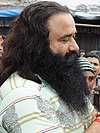 |
Gurmeet Ram Rahim Singh, an Indian guru who has been head of the religious social group Dera Sacha Sauda since 1990, was convicted on 25 August of two counts of rape. Following the verdict, at least thirty-six people were killed and more than three hundred injured in widespread riots throughout Northern India. | |
| 8 | Solar eclipse | 1,195,758 |  |
As seen in America this week, and elsewhere throughout history. In 585 BCE an eclipse predicted by Thales of Miletus allegedly launched a peace between the warring Medes and Lydians, while in fifth year of the reign of Chinese king Zhong Kang, two astronomers were executed for their failure to predict an eclipse. So, you know, some good, some bad. | |
| 9 | List of solar eclipses in the 21st century | 1,042,511 |  |
Solar eclipse of July 22, 2009 pictured, with a photograph taken from Bangladesh. The next total eclipse will be on July 2, 2019, but I wouldn't expect a significant amount of coverage since the main region of totality will be over the southern Pacific Ocean, where humans are unlikely to live unless science can finally evolve us some gills. | |
| 10 | List of solar eclipses visible from the United States | 1,021,067 |  |
To be honest, there is a limit to how much can be written about eclipses, and there's still two more eclipse articles to go. I could take this opportunity to tell you when the next total eclipse visible from the United States will be, but since that's one of the two eclipse articles still to come, I will maintain the tension. |
Note:
- The article for Game of Thrones has increased by roughly a million viewers from last week, with no equivalent boost for the season article, which looks suspicious. Considering the mobile percentages from the raw list, it can be estimated that last week had 507,454 mobile & 578,474 computer views, with this week having 543,364 mobile & 1,418,948 computer views, indicating a potential issue. However, it is difficult to say how many of those views should be branded "illegitimate", as the article certainly belongs on the list, even if it maybe should be slightly lower. It should be considered that the #2 page is the season article, so the #1 slot has not been "stolen" from something unrelated that deserves it more. If the view counts for Game of Thrones were the same as last week, the article would be down at #8 (from #4), which is, perhaps, an indicator of how many big articles there were this week.
Exclusions
- These lists excludes the Wikipedia main page, non-article pages (such as redlinks), and anomalous entries (such as DDoS attacks or likely automated views). Since mobile view data became available to the Report in October 2014, we exclude articles that have almost no mobile views (5–6% or less) or almost all mobile views (94–95% or more) because they are very likely to be automated views based on our experience and research of the issue. Please feel free to discuss any removal on the Top 25 Report talk page if you wish.
Biomedical content, and some thoughts on its future
- Co-authors for this piece are listed at http://jech.bmj.com/content/early/2017/08/24/jech-2016-208601
A recent article in the Journal of Epidemiology and Community Health outlines the history of Wikipedia's medical content, community, collaborations and challenges. It is aimed at a non-Wikipedic audience, however it should hopefully still be an interesting read to those well-versed in the movement. Here, we outline a few points from the article, and expand a little on the relevant aspects for Wikipedians.
A little history
Wikipedia's medical content has come a long way since 2001. WikiProject Medicine is consistently one of the most active editor communities, as well as one of the longest-running (since 2004). As with the whole encyclopedia, 2007–2008 marked a major turning point. Along with the sharp drop-off in editor numbers, this year saw a large increase in citations added to articles. Since that spike, the number of references added each year seems to be generally increasing. The addition of new medical GAs and FAs has slowed a little since 2008 but are still growing at around +15 per year.
There are many external assessments of content quality, referencing, systemic biases, community structure, editor demographics and much more (as frequently reviewed in The Signpost's research report section). Sadly, most studies look at single-timepoint snapshots of Wikipedia. Although many topics are covered repeatedly over the years, the differing methodologies make it difficult to analyse how metrics have changed over time. We therefore encourage researchers to consider comparing at least a few time points. Similarly, there are currently no large-scale standardised comparisons of articles in different fields. It's a cliche to say that 'more research is needed'... but more research is needed.
Addressing challenges simultaneously
With the WMF developing their strategy through to 2030, we also dedicated some of the paper to discussing the encyclopedia's challenges and some possible ways to tackle them. These are organised into discussion of individual contributors, larger organisations, representation in society as a whole, and aspects of the software and interface. The paper focuses on biomedical content, but many of these topics are applicable to the encyclopedia as a whole.
It's no surprise that growing and maintaining a healthy editor community is vital as the encyclopedia matures from primarily content creation more towards content improvement. We need to continually improve the encyclopedia's technologies, community culture, policies, demographic diversity, public opinion, and support by outside institutions. It is our opinion that tackling diverse challenges simultaneously has a greater effect than addressing them individually. Progress in one area supports progress in the others.
The value of outside collaborations
We make the case that collaborations between Wikipedians and outside institutions/individuals are particularly effective ways of bringing new contributors to the encyclopedia. Wikipedia's community is mostly set up on the ideal of long-term editors. Such editors are certainly invaluable, but engaging potential users with other contribution styles can still be useful. Traditional outreach efforts such as workshops, editathons and competitions engage established editors. Working out ways to get productive, reliable, well-integrated contribution from new users, or even one-off users, we think that these represent some of the best ways of growing Wikipedia's community and content.
What Wikipedians can do
Collaborations require Wikipedians to be involved to provide insider knowledge. Here are a few examples of activities that the editor community can do to more broadly help out:
- Go out and seek collaborators and users. Many successful collaborations have come about through the initiative of users who contacted partner organisations. Often organisations that would never have thought to be involved are excited to collaborate. These include medical schools (e.g. UCSF), institutions (e.g. Cochrane), and societies (e.g. International Society for Computational Biology). Doubtless, more examples can be discussed in the comments.
- Help streamline guidelines. Wikipedia's structure makes it easier for policies to be expanded than consolidated. It's a difficult task, but we need to make sure that guidelines are as short, easy to navigate, and readable as possible. This will make it as easy as possible for partners to work out how to contribute in ways that are compatible with our policies.
- Welcome new collaborators and users. Much has already been said about ensuring our culture is as welcoming as possible, but there's never any harm in reminding ourselves of its importance. We have to keep improving and updating tutorials and help material (especially with the increasing prominence of VisualEditor). Being patient with new users, assuming good faith and helping them get used to Wikipedia's norms and policies makes a big difference to their first edits. Remember that it can take months to learn. Even experienced editors can still be surprised by new policies tucked away in the labyrinth.
Conclusions
It is possible that successful ideas from the biomedical community can also be translated into other sections. Hopefully the academic WikiJournal format pioneered by WikiJournal of Medicine will be extended to additional journals covering broader topics (such as the WikiJournal of Science in development). Similarly, a lot can be learnt from successes in other fields, such as the GLAM-Wiki initiative. Many of the collaborative ventures require additional organisational effort. At their best, however, they engage people who would not have otherwise contributed to a Wikimedia project.
Main reference:
- Shafee, Thomas; Masukume, Gwinyai; Kipersztok, Lisa; Das, Diptanshu; Häggström, Mikael; Heilman, James (2017-10-29). "The evolution of Wikipedia's medical content: past, present and future". Journal of Epidemiology and Community Health. 71 (10): 1122–1129. doi:10.1136/jech-2016-208601. PMC 5847101. PMID 28847845.
Further reading:
- Shafee, Thomas; Mietchen, Daniel; Su, Andrew I. (2017-08-11). "Academics can help shape Wikipedia". Science. 357 (6351): 557–558. Bibcode:2017Sci...357..557S. doi:10.1126/science.aao0462. PMID 28798122. S2CID 19075849.
- Shafee, Thomas; Das, Diptanshu; Masukume, Gwinyai; Häggström, Mikael (2017-01-15). "WikiJournal of Medicine, the first Wikipedia-integrated academic journal". WikiJournal of Medicine. 4 (1). doi:10.15347/wjm/2017.001.
- Luk, Ann (2017-04-12). "Continuing to Bridge the Journal-Wikipedia Gap: Introducing Topic Pages for PLOS Genetics". PLOS Biologue.
- Shafee, Thomas; Heilman, James; Masukume, Gwinyai; Häggström, Mikael (2016-10-29). "Wikipedia's medical content: A new era of collaboration". Wikimedia Blog.
- Masukume, Gwinyai; Kipersztok, Lisa; Das, Diptanshu; Shafee, Thomas; Laurent, Michaël R.; Heilman, James M. (2016-11-01). "Medical journals and Wikipedia: a global health matter". The Lancet Global Health. 4 (11): e791. doi:10.1016/S2214-109X(16)30254-6. PMID 27765289.
Discussion summarization; Twitter bots tracking government edits; extracting trivia from Wikipedia
A monthly overview of recent academic research about Wikipedia and other Wikimedia projects, also published as the Wikimedia Research Newsletter.
Briefly
"Wikum: bridging discussion forums and wikis using recursive summarization"
- Summary by Baha Mansurov
The paper[1] proposes a solution to the problem of information galore in online discussions by creating and testing a tool that allows editors to summarize parts of a discussion and combine these summaries into a higher level summaries until a single summary of the discussion is created. (see also the related presentation at the September 2016 Wikimedia Research Showcase)
Annual "State of Wikimedia Research" summary presentation at Wikimania
The Wikimania 2017 conference in Montreal, Canada featured the "State of Wikimedia Research 2016–2017" presentation, a quick tour of scholarship and academic research on Wikipedia and other Wikimedia projects from the last year (now an annual Wikimania tradition, dating back to 2009). The slides are available online. The highlighted research publications (many previously covered in this newsletter) were grouped into the following topic areas: "Gender gap in participation", "Gender gap in content", "Fake news!", "Using Wikipedia for prediction", "Syndication", "Wikipedia and the world", and "Datasets: research that enables other research".
Conferences and events
See the research events page on Meta for upcoming conferences and events, including submission deadlines.
Other recent publications
Other recent publications that could not be covered in time for this issue include the items listed below. contributions are always welcome for reviewing or summarizing newly published research.
- Compiled by Tilman Bayer
- "Beyond neutrality: how zero rating can (sometimes) advance user choice, innovation, and democratic participation"[2] From the abstract: "Over four billion people across the globe cannot afford Internet access. [...] Enter zero rating. Mobile Internet providers in the developing world now waive the data charges for services like Facebook, Wikipedia, or local job-search sites. Despite zero rating's apparent benefits, many advocates seek to ban the practice as a violation of net neutrality.
This Article argues that zero rating is defensible by net neutrality's own normative lights. Network neutrality is not about neutrality for its own sake, but about advancing consumer choice and welfare, innovation in the development of new services, and democratic participation in the public sphere. Analysis of zero rating should accordingly focus on the question of how it impacts these goals: we ought to embrace zero-rating programs that advance net neutrality’s substantive goals and reserve our skepticism for those services that would sacrifice the network’s generative potential to pursue mere short-term gains. " (About Wikipedia Zero) - "Fun facts: automatic trivia fact extraction from Wikipedia"[3] From the abstract: "we formalize a notion of trivia-worthiness and propose an algorithm that automatically mines trivia facts from Wikipedia. We take advantage of Wikipedia’s category structure, and rank an entity’s categories by their trivia-quality. Our algorithm is capable of finding interesting facts, such as Obama’s Grammy or Elvis’ stint as a tank gunner. In user studies, our algorithm captures the intuitive notion of 'good trivia' 45% higher than prior work. Search-page tests show a 22% decrease in bounce rates and a 12% increase in dwell time, proving our facts hold users’ attention."
- "The citizen IS the journalist: automatically extracting news from the swarm"[4] From the abstract: "... we describe SwarmPulse, a system that extracts news by combing through Wikipedia and Twitter to extract newsworthy items. We measured the accuracy of SwarmPulse comparing it against the Reuters and CNN RSS feeds and the Google News feed. We found precision of 83 % and recall of 15 % against these sources."
- "Production of scientific information on the internet: the example of Wikipedia" ("Produktion von naturwissenschaftlichen Informationen im Internet am Beispiel von Wikipedia", in German)[5] From the English abstract: "On the internet, lay people cannot only passively receive scientific information, they can also actively produce it. How do lay people process uncertain and contradictory information? [...] little is yet known about the factors that influence the production of natural science information by lay people on the Internet. In our article, we discuss a variety of influencing factors and derive predictions about how these factors affect the production behaviors and the resulting text products. Finally, we illustrate our considerations using the online encyclopaedia Wikipedia."
- "Building an encyclopedia with a wiki? Looking back at Wikipedia's editorial policy" ("Construire une encyclopédie avec un wiki ? Regards rétrospectifs sur la politique éditoriale de Wikipédia", in French)[6] From the English abstract: "[The author] studied the discussions on applying rules to source citation and identified two streams that illustrate the editorial policy known as 'wiki pole' and 'encyclopedia pole'. Although these two epistomological regimes may appear mutually contradictory, in fact this policy aims at finding balance between the wiki's potential and the requirements of trustworthiness inherent in producing an encyclopedia."
- "Persistent Bias on Wikipedia. Methods and Responses"[7] From the abstract: "Techniques for biasing an entry include deleting positive material, adding negative material, using a one-sided selection of sources, and exaggerating the significance of particular topics. To maintain bias in an entry in the face of resistance, key techniques are reverting edits, selectively invoking Wikipedia rules, and overruling resistant editors. Options for dealing with sustained biased editing include making complaints, mobilizing counterediting, and exposing the bias. To illustrate these techniques and responses, the rewriting of my own Wikipedia entry serves as a case study." (about the article Brian Martin)
- "Multi-cultural Wikipedia mining of geopolitics interactions leveraging reduced Google matrix analysis"[8] From the abstract: "Wikipedia stores valuable fine-grained dependencies among countries by linking webpages together for diverse types of interactions (not only related to economical, political or historical facts). We mine herein the Wikipedia networks of several language editions using the recently proposed method of reduced Google matrix analysis. [...] Our study concentrates on 40 major countries chosen worldwide. Our aim is to offer a multicultural perspective on their interactions by comparing networks extracted from five different Wikipedia language editions, emphasizing English, Russian and Arabic ones. We demonstrate that this approach allows to recover meaningful direct and hidden links among the 40 countries of interest." (See also earlier coverage of related papers by some of the same authors: 'Wikipedia communities' as eigenvectors of its Google matrix" , "How Wikipedia's Google matrix differs for politicians and artists")
- "Enriching Wikidata with frame semantics"[9] From the paper: "To increase the usability of WD [Wikidata] for NLP tasks, we aim at enriching WD with linguistic information by aligning it to the famous lexicon FrameNet ... Specifically, we aim to find a mapping between WD facts, e.g. educated at(Person, University) and similar structures in expert lexical resources. [...] in addition to the direct result of enriching WD with linguistic information, the alignments can be used to refine the property structure of WD by inducing new general/specific properties. For instance, the property killed by refers to someone (victim) killed by somebody else (killer). However, the property does not distinguish between different kinds of killing, such as execution. In FN such information is already captured through the frames Execution and Killing, where the former frame inherits from the latter. By aligning killed by to both frames, the property killed by can refined by introducing a new sub-property: executed by."
- "Explicit neutrality in voter networks – an analysis of the requests for adminship (RfAs) in Wikipedia" ("Explizite Neutralität in Wählernetzwerken – Eine Analyse der Requests for Adminship (RfAs) in Wikipedia", in German)[10] Translated from the abstract: "This paper examines requests for adminship (RfAs) in Wikipedia. In particular, we are answering the research question about what increases the probability that someone provides a neutral vote about a potential administrator. ... The results indicate a strong tendency toward neutral reciprocity (i.e. a higher probability that user A votes neutral on user B who himself had voted neutral on user A) and neutral balance (i.e. a higher probability that user A votes neutral on another user B, who has received an opposing vote from user C, who in turn had received an opposing vote from user A)."
- "Keeping Ottawa honest—one tweet at a time? Politicians, journalists, Wikipedians and their Twitter bots"[11] From the abstract: "WikiEdits bots are a class of Twitter bot that announce edits made by Wikipedia users editing under government IP addresses, with the goal of making government editing activities more transparent. This article examines the characteristics and impact of transparency bots, bots that make visible the edits of institutionally affiliated individuals by reporting them on Twitter. We map WikiEdits bots and their relationships with other actors, analyzing the ways in which bot creators and journalists frame governments’ participation in Wikipedia. We find that, rather than providing a neutral representation of government activity on Wikipedia, WikiEdits bots and the attendant discourses of the journalists that reflect the work of such bots construct a partial vision of government contributions to Wikipedia as negative by default."
References
- ^ Zhang, Amy X.; Verou, Lea; Karger, David (2017). Wikum: bridging discussion forums and wikis using recursive summarization. CSCW '17. New York, NY, USA: ACM. pp. 2082–2096. doi:10.1145/2998181.2998235. ISBN 9781450343350.

- ^ Ard, BJ (May 1, 2016). "Beyond neutrality: how zero rating can (sometimes) advance user choice, innovation, and democratic participation". Maryland Law Review. 75 (4): 984. ISSN 0025-4282.
- ^ Tsurel, David; Pelleg, Dan; Guy, Ido; Shahaf, Dafna (December 12, 2016). "Fun facts: automatic trivia fact extraction from Wikipedia". arXiv:1612.03896. (preprint), published version: https://dl.acm.org/citation.cfm?id=3018709
 , author's copy: http://www.pelleg.org/shared/hp/download/fun-facts-wsdm.pdf
, author's copy: http://www.pelleg.org/shared/hp/download/fun-facts-wsdm.pdf
- ^ Oliveira, João Marcos de; Gloor, Peter A. (2016). "The citizen IS the journalist: automatically extracting news from the swarm". In Matthäus P. Zylka; Hauke Fuehres; Andrea Fronzetti Colladon; Peter A. Gloor (eds.). Designing Networks for Innovation and Improvisation. Springer Proceedings in Complexity. Springer International Publishing. pp. 141–150. ISBN 9783319426969.

- ^ Nestler, Steffen; Leckelt, Marius; Back, Mitja D.; Beck, Ina von der; Cress, Ulrike; Oeberst, Aileen (July 1, 2017). "Produktion von naturwissenschaftlichen Informationen im Internet am Beispiel von Wikipedia". Psychologische Rundschau. 68 (3): 172–176. doi:10.1026/0033-3042/a000360. ISSN 0033-3042. Retrieved 2017-07-29.

- ^ Sahut, Gilles (January 6, 2017). "Construire une encyclopédie avec un wiki ? Regards rétrospectifs sur la politique éditoriale de Wikipédia". I2D – Information, données & documents. me 53 (4): 68–77. ISSN 0012-4508.

- ^ Martin, Brian (2017). "Persistent Bias on Wikipedia. Methods and Responses". Social Science Computer Review.
 Author's copy
Author's copy
- ^ Frahm, Klaus M.; Zant, Samer El; Jaffrès-Runser, Katia; Shepelyansky, Dima L. (December 23, 2016). "Multi-cultural Wikipedia mining of geopolitics interactions leveraging reduced Google matrix analysis". arXiv:1612.07920. (preprint), published version: http://www.sciencedirect.com/science/article/pii/S0375960116321879

- ^ Mousselly-Sergieh, Hatem; Gurevych, Iryna (2016). "Enriching Wikidata with frame semantics". Semantic Scholar.
- ^ Putzke, Johannes; Takeda, Hideaki (January 23, 2017). "Explizite Neutralität in Wählernetzwerken – Eine Analyse der Requests for Adminship (RfAs) in Wikipedia". Wirtschaftsinformatik 2017 Proceedings.

- ^ Ford, Heather; Dubois, Elizabeth; Puschmann, Cornelius (October 12, 2016). "Keeping Ottawa honest—one tweet at a time? Politicians, journalists, Wikipedians and their Twitter bots". International Journal of Communication. 10 (0): 24. ISSN 1932-8036.
Google's Ideological Echo Chamber; What makes someone successful?
Google's Ideological Echo Chamber
The controversial memo Google's Ideological Echo Chamber was published on August 5, 2017. Due to the since-fired James Damore's referencing of certain Wikipedia pages, those pages are becoming hot spots of edit warring and massive restructuring.
In the 10-page memo, Danmore wrote that "personality differences" between men and women such as women having a "lower stress tolerance" are the reason that there are fewer women than men in leadership and engineering roles at the company. In making his conclusions, Danmore cited the Wikipedia pages Neuroticism, Sex differences in psychology, Empathizing–systemizing theory, and others.
Motherboard reported on the uptick in edits and page views on Neuroticism in particular, saying that "the article has received more than six times the amount of pageviews as it does on average—topping out at 15,574 pageviews yesterday. Between yesterday and now, the page has been revised 27 times, compared to its average of 4.2 edits per month." Discussions on the talk page have been occurring rapidly, with the size of the page almost becoming six times larger in August of 2017, and the page itself received 157 edits in August, compared to two in July.
What makes someone successful?
Seth Stevens-Davidowitz is a former Google data scientist who, as Business Insider reported on August 6, 2017, thinks he has found what it takes to become successful (the mark of being successful being, having a Wikipedia page). Stevens believes that at long last he has found the answer. Grow up near a big college town that is diverse and somewhat urban.
In order to perform this study, Stevens took 150,000 articles about Americans (limited to baby boomers). He took their county of birth, date of birth, occupation, and gender. Stevens found that "30% of people found success through arts and entertainment, 29% through sports, 9% through politics, and 3% through science or academia." He also learnt that geography plays a large role in Wikipedia page prevalence (WPP). Baby boomers born in California had a one in 1,209 rate of WPP, compared to West Virginia, with a WPP of one in 4,496. At a more local level, Stevens found a WPP of one in 748 in Suffolk County. Growing up near "large, semi-urban college towns" placed the counties containing Madison, Wisconsin; Berkeley, California; Chapel Hill, North Carolina; and Ithaca, New York (home to University of Wisconsin–Madison; University of California, Berkeley; UNC Chapel Hill; and Cornell respectively) in the top 3% of counties ranked by WPP. Stevens wrote "The greater the percentage of foreign-born residents in an area, the higher the proportion of children born there who go on to notable success," The effect was very prominent, so prominent, in fact that among two college towns, both of around the same size, "the one with more immigrants will produce more prominent Americans." Stevens also writes that "Perhaps this effort to zoom in on the places where hundreds of thousands of the most famous Americans were born can give us some initial strategies, encouraging immigration, subsidizing universities, and supporting the arts, among them."
In brief
- The second Confederate President: The list of President of the Confederate States of America was briefly vandalised by an IP to include Donald Trump. First reported on by Business Insider on August 15, several other media outlets picked up on the vandalism.
- Malaika Aurora Turns 44: Birthday wishes poured in from all over, as people were extremely excited to wish Malaika Arora a happy 44th birthday. However, those well meaning wishes were not quite correct, as Wikipedia had erroneously reported her birthday as August 23, not October 23. Malaika Aurora herself corrected the mistake, blaming Wikipedia for the mishap. Reported by NDTV (August 24, 2017)
- Siri "What is an Indian?": Apple iPhone users were outraged when they discovered that if you ask Siri "what is an Indian?" the response is "They are a bit brown and they smell like curry and eat it." The text comes from vandalism by since blocked Thedarkoverlord123 which was up for three minutes. This prompted questions about how often Apple updates Siri's responses. Reported in BuzzFeed (August 11, 2017)
- Fined for editing Wikipedia: A 53-year-old South Korean man (referred to by the surname Yang) was fined 4 million won ($3,564) on September 1, 2017, for changing the Wikipedia pages of Moon Jae-in and Lee Jae-myung to say that they were North Korean. The Seoul Central District Court fined the man, a software developer, for vandalizing the two pages in February. Yang corrected the edits six hours later, but was referred to the prosecution for investigation by the National Election Commission. Reported in The Korea Times and multiple other publications. (September 1, 2017)
- Cuba's Internet Paradox: The deputy principal in a state-run primary school in Cuba was fired because she had her students look up information on the Internet as part of a history lesson. One of them used Wikipedia. “They [the government] say children can’t use Wikipedia, because everything in Wikipedia is a lie. [They say] that children have to learn what is in history books, and not look for other information,” the unnamed woman told Amnesty International. (August 29, 2017)
- Download Wikipedia: The Economic Times, and Lifehacker picked up (August 20, 2017 and August 26, 2017) on the fact that you can download Wikipedia and put it on a flash drive (see previous Signpost coverage).
New to you: WikiProject YouTube
WikiProject YouTube
YouTube may be more than 12 years old, but as a WikiProject, it’s still a newbie on the English and Simple English Wikipedia. Jamesjpk talked to the Signpost about how he got started in this new project, issues that they face and told us a little about the Simple English version!
WikiProject YouTube was first proposed by DerryAdama in April of 2015.[1] The project was started up nearly a year later in 2016.[2] One of the active users is Jamesjpk who also works on the Simple English YouTube project.[3] Jamesjpk became involved with the English Wikiproject while working on a draft for a YouTuber, Aphmau. While working on the project he went looking for projects to place on the talk page. James found the proposed, but abandoned project and began working on it. He also created the Simple English project, although with Simple English Wikipedia, articles cannot be tagged with WikiProjects on the talk page, as all WikiProjects are still unofficial.
Working with YouTube articles presents a unique challenge. Even though it’s a huge video platform in which 5 billion videos are watched every day through YouTube,[4] it can be difficult to show notability for individual YouTubers. Jamesjpk has estimated that 75% of all articles started about YouTube personalities have been deleted from Wikipedia. Editors writing these bios often fail to adequately source the bios with independent, reliable sources. Jamesjpk and other members of WikiProject YouTube want to see articles with better sourcing, less detail about YouTuber’s personal lives and a greater emphasis on their work as videographers or personalities online. He emphasizes to writers to “Explain why the YouTuber is notable!” The fact that a YouTuber might be reaching a large audience as shown by their subscriber numbers, downloads or other milestones is difficult to source outside of YouTube itself also makes it difficult to write about personalities on Wikipedia.
Another challenge is writing neutrally about controversial YouTubers and getting access to media for illustration purposes. Jamesjpk says that most YouTubers won’t answer inquiries for picture rights and most YouTube videos are licensed under the YouTube Standard License, or “all rights reserved makes it difficult to obtain media for Wikimedia Commons. “For the time being,” he says, “I’m not sure how our group would address this issue, as it is a hard one to crack.”
Notes
- ^ "WikiProject Council Proposals YouTube". Wikipedia.
- ^ "WikiProject YouTube Revision History". Wikipedia.
- ^ "WikiProject YouTube on Simple English Wikipedia". Simple English Wikipedia.
- ^ "36 Mind Blowing YouTube Facts, Figures and Statistics – 2017". Fortunelords.
Latest tech news
Latest tech news from the Wikimedia technical community: 2017 #35 & #36. Please tell other users about these changes. Not all changes will affect you. Translations are available on Meta.
- Recent changes
- Syntax highlighting is now a beta feature on Wikimedia wikis with text written from left to right. It will come to right-to-left wikis later. This beta feature is based on CodeMirror. [1][2]
- You will now get a notification when someone tries to log in to your account and fails. If they try from a device or IP address that has logged in to your account before you will be notified after five failed attempts. You can turn this off or choose to get an email notification in your preferences. You can also turn on to get an email when someone logs in to your account from a new device or IP address. [3]
- You can block users from sending you notifications. [4] (see documentation page)
- The RevisionSlider user interface has changed. You can now select revisions by clicking on the bars. You can move the blue knob past the yellow one and the yellow one will move along, and the other way around. [5][6]
- New filters for edit review is a beta feature to improve recent changes pages. It will work on watchlists from 5 September. [7]
- Problems
- Some pages show the error
Lua error in mw.wikibase.entity.lua at line 34: The entity data must be a table obtained via mw.wikibase.getEntityObject. This problem happens on pages with a Lua module that use Wikidata. This has now been fixed and no new pages will get this problem. You still need to fix pages that were broken before and still show the error message. You can see how on this page. [8] - Some users have problems loading very large watchlists. It is working better than earlier but the problem has not been solved. The developers are working on fixing it. Until it has been fixed you can turn on "Expand watchlist to show all changes, not just the most recent" in your preferences and see if it helps. [9]
- Some pages show the error
- Future changes
- In the future you will have global preferences. This means you could set something in your preferences to work in the same way on all wikis. You will not be forced to use global preferences. The developers are now asking if editors need exceptions. This is where you want to use global settings on almost all wikis, but have some wikis where you want it to work in a different way. If you want this you need to tell the developers now. You can do so on the talk page. [10]
- New filters for edit review is a beta feature to improve recent changes pages. It will work on watchlists from 5 September. [11]
 The jQuery library will be upgraded to version 3 in September 2017. Wikis can ask on Phabricator to get it early, so they can help find and solve problems now.
The jQuery library will be upgraded to version 3 in September 2017. Wikis can ask on Phabricator to get it early, so they can help find and solve problems now.
- Feedback
- Tech News writers are asking readers five questions to make their newsletter better. You can answer the questions here.
2017 WikiCup round 4 wrap-up
Round 4 of the WikiCup has ended and we move forward into the final round. In round 4, a total of 12 FAs, 3 FLs, 44 GAs, 79 DYKs, 1 ITN and 42 GARs was achieved, with no FPs or FTs this time. Congratulations to Peacemaker67 on the Royal Yugoslav Navy Good Topic of 36 items, and the 12 featured articles achieved by Cas Liber (5), Vanamonde93 (3), Peacemaker67 (2), Adityavagarwal (1) and 12george1 (1). With a FA scoring 200 points, and bonus points available on top of this, FAs are likely to feature heavily in the final round. Meanwhile Yellow Evan, a typhoon specialist, was contributing 12 DYKs and 10 GAs, while Adityavagarwal and Freikorp topped the GAR list with 8 reviews each. As we enter the final round, we are down to eight contestants, and we would like to thank those of you who have been eliminated for the useful contributions you have made to the Cup and Wikipedia. The lowest score needed to reach round 5 was 305, and I think we can expect a highly competitive final round.
Ships
Peacemaker67, scored big, with a 36 article good topic, "Ships of the Royal Yugoslav Navy." The topic is comprised of Dalmacija, Kumbor, Dubrovnik, Beograd-class destroyer, Beograd, Zagreb, Ljubljana, Nada, Beli Orao, Galeb-class minelayer, Malinska-class minelayer, Schichau-class minesweeper, 250t-class torpedo boat, T1, T2, T3, T4, T5, T6, T7, T8, Kaiman-class torpedo boat, Uskok-class torpedo boat, Orjen-class torpedo boat, Zmaj, Hrabri-class submarine, Hrabri, Nebojša, Osvetnik-class submarine, Osvetnik, Smeli, Vardar, Sava, Drava, and Morava
-
German light cruiser SMS Niobe in Kiel in 1901.
-
Austro-Hungarian ironclad SMS Kronprinz Erzherzog Rudolf.
-
Yugoslavian destroyers Dubrovnik (left, then Italian Premuda), and Beograd (then Italian Sebenico)
-
A Flower-class corvette, similar to HMS Mallow
-
Former German M 120 minesweeper in Italian service, similar to the Galeb class
-
Malinska-class mining tender of the Royal Yugoslav Navy
-
One of the T-group boats of the 250t class, 81 T
-
Yugoslav torpedo boat T3 underway in 1931
-
69 F of the Kaiman class (later renamed T11) photographed in 1916
-
The Orjen-class torpedo boat Velebit photographed in 1939
-
The Yugoslav submarine Hrabri underway
-
Vardar underway in 1933
-
Austro-Hungarian river monitor SMS Bodrog on the river Danube in 1914
-
A postcard print of a painting by Harry Heusser of the Austro-Hungarian river monitor SMS Körös bombarding Belgrade in 1914
-
Sister ship to SMS Enns, SMS Inn
Featured articles
Five users accounted for the twelve featured articles promoted this round. Cas Liber accounted for five of those, receiving points on Green rosella, Grevillea juniperina, Banksia sceptrum, Black stork, and Red-billed quelea. Vanamonde93 received three: Starship Troopers, A Wizard of Earthsea, and Steve Biko. The last four were promoted by three different users. Yugoslav torpedo boat T5, and Kaiman-class torpedo boat were the result of Peacemaker67's diligent ship article building, and the last two articles, Hurricane Andrew, and Black stork went to 12george1 and Adityavagarwal, respectively.
-
Robert A. Heinlein, author of Starship Troopers
-
Ursula K. Le Guin, author of A Wizard of Earthsea
-
Green rosella (also known as Tasmanian rosella) in Tasmania, Australia
-
Grevillea juniperina
-
Naval Ensign of the Kingdom of Yugoslavia 1922-1939
-
Black stork in Kruger National Park, South Africa
-
Banksia sceptrum
-
Hurricane Andrew
-
Male breeding plumage of the red-billed quelea
-
An adult black stork at at Dierenrijk Europa, Nuenen, Noord-Brabant, Netherlands.
-
The French submarine Papin torpedoed 51 T in September 1915.
Typhoons
Yellow Evan led both the Good Articles and DYKs, with ten and thirteen respectively. His ten Good articles centered around typhoons: Typhoon Dinah (1987), Typhoon Cary (1987), Typhoon Kelly (1987), Typhoon Vera (1986), Typhoon Abby (1986), Typhoon Agnes (1984), Typhoon Phyllis (1975), Typhoon Kim (1980), Typhoon June (1984), and Typhoon Rita (1975); as did his DYKs: Typhoon Agnes (1984), Typhoon Joe (1980), Typhoon Kim (1980), Typhoon Betty (1980), Tropical Storm Winona (1990), Typhoon Zola (1990), Typhoon Phyllis (1975), Typhoon Rita (1975), Typhoon Hattie (1990), Typhoon Gene (1990), Typhoon Caitlin (1991), Typhoon Hattie (1990), and Typhoon Page (1990)
-
Typhoon Dinah at 05:30 UTC on August 30, 1987
-
Typhoon Kelly early on October 15, 1987
-
Typhoon Vera early on August 24, 1986
-
Typhoon Abby on the afternoon of September 17, 1986
-
Typhoon Agnes early on November 4, 1984
-
Typhoon Phyllis on August 13, 1975
-
Typhoon Kim during the late morning hours of July 24, 1980
-
Typhoon June on August 29, 1984 at 07:27 UTC
-
Typhoon Zola near peak intensity
-
Typhoon Rita near peak intensity
-
Typhoon Winona on August 10, 1990
-
Typhoon Joe on July 20, 1980
-
Typhoon Betty on November 3, 1980
-
Typhoon Hattie on October 5, 1990
-
Typhoon Gene on September 29, 1990
-
Typhoon Caitlin on July 28, 1991. At the time Caitlin had winds of 88.9 knts (102.3 mph, 164.8 kph), 1-min sustained and a pressure of 940 mbar. Caitlin was about 245 miles away from land.
-
Typhoon Page on November 28, 1990
Good article reviews
Users Adityavagarwal and Freikorp had the most GARs, each with eight.
-
Font and logo used for the Clock Tower video game series for first three games in Japan
-
Dontnod Entertainment received an award for Life Is Strange at the 2016 Game Developers Choice Awards, with directors Raoul Barbet and Michel Koch and producer Luc Baghadoust present.
-
Meteos was developed for the Nintendo DS system.
-
Marilyn Manson performing in 2017. Left to right: Paul Wiley, Tyler Bates, Manson, Daniel Fox, Twiggy, and Gil Sharone (obscured at the drums).
-
3 years old Welsh B "Shangri-La" in pony show in Finland.
-
SMS Meteor, a sister ship of SMS Comet, Drache, and Cyclop
-
War Flag of Prussia, since 1850
-
The male scarlet myzomela
-
Austrian cruiser Tiger. Photographed at Pola soon after completion in the late 1880s. Two covered shipbuilding ways appear in the right background, located on Oliven Island where naval shipbuilding at Pola was concentrated.
-
West Indian manatees
Bots
No bots were harmed in the writing of this article.
There are a startling 1,862 bots at large on Wikipedia.[2] If the world has any fear of AI, then the robo-cide should probably begin here. There is suspicion that a few of these bots are included in the count of the 5,000 most active editors. It's uncertain whether this is true or not, but it does make you wonder – who are they and what do they do? (In plain English, please.) Scripts are somewhat comprehensible, HTML makes sense – bot but why so many? Do they ever have their own bot-like edit-wars? Has a bot ever become a sock of another bot? Who needs administrators or ArbCom when bots could do the same things (without mercy)? Many bots possess human qualities and foibles. Short descriptions of the most interesting ones include:
- Botnet – the scary, big, and bad, bot boss.
- BotTheBuilder – created with a child-like personality. This bot will automatically leave a message on all the talk pages of articles on heavy machinery that optimistically states: "Yes we can!"
- Bots n Panz – assembles topics for a new WikiProject: Domestication of Men. Two articles have been tagged for assessment for this project so far. These are What women want men to do in the kitchen and You never listen.
- orangeBot – has the tedious job of sorting through the Knock-knock joke articles, assessing their humor, and adding the speedy deletion template to tag the article page: pointless since every knock-knock joke get the speedy deletion tag. Orange you glad this bot is around? This bot was created by the self-identified German participants on the talk page.
- Bots!! – is a massively multiplayer bot and "uses nProtect GameGuard but because of its method of actuation, similar to a rootkit, it is criticized for being extremely invasive."[3] It was created in March 2006, so its a little slow and pixelated. This bot was licensed to Playdom. Then Disney purchased it[4] from Playdom for $763 million. The Korean version is called BOUT!!
- Bots – easily confused with the former bot. Though named after a band, it is able to translate Dutch articles into English.
- Botswana – A place where bots 'wanna' retire.
- Wilf Bott, Richard Bott, Mark Bott, Leon Bott and John Bott – takes articles on soccer players,[5] skeleton players,[6] cricketeers,[7] and rugby[8] players and tags them as stubs. This is pretty pointless since all amateur sports players are stubs anyway.
- RaoulBott – a Hungarian-American mathematician best known for his Bott periodicity theorem, the Morse–Bott functions, and the Borel–Bott–Weil theorem.
- JackBot and Jillbot – pretty useful in filling out the biography parameter "| married for money = <!--answer with yes, no, probably-->".
- HotBot - a special project of the editors active in the WP:WikiProject Food and Drink. They use it to extract recipes from food and drink articles, deposit them into Wikibooks and expand them into recipes that have all the ingredients in metric and annoying American quantities. It also will transform a recipe that is designed to feed a family of four into other quantities, kinda like the loaves and fishes miracle.
- HotCrockBot – a subsidiary of HotBot but only creates wikibook recipes for things that can be braised.
- CrackBot – this particular bot is a little touchy and hangs out on just a few different article pages. It has some helper scripts with their own names: KISS, Tea time, and IceChat.
- UKcrackbot – the UK has some pretty great place names. This bot doesn't do a darn thing except watch the others work.
- Crackbot cave – a script that used to help disambiguate bat and cave topics. It got gummed up and was decomissioned when it didn't know how to handle Knee-wrecker Passage and Beans and Bacon mine.
- crackBotHall, a landmark ruin near Keld, North Yorkshire.
- LittleCrakBot, this bot leaves messages on talk pages for unusually curt editors who are notoriously contentious.
- Crackbot theory, well there are quite a few of these and somewhat difficult to describe.
- BotBound – a favorite in WP:WikiProject Botany because it will flag the articles of those plants whose roots tend to rot.
- PainInDaBot – – a bot that keeps a count of new editors who are treated this way by cranky editors with lots of edits to their name.
- PotBot – scavenges WP looking for articles that contain the word "Cannabis" and inserts these articles into this template. It is not entirely predictable. But it seems totally relaxed, euphoric, can't fall asleep, talks too fast, is always hungry, has the jitters, is anxious, paranoid, introspective, and makes pompous philosophical declarations. It also tends to loop a lot.[9][10]
Snide remarks and dubious addenda
- ^ attributed to Baby Sinclair from the TV series Dinosaurs
- ^ https://stats.wikimedia.org/EN/BotActivityMatrixEdits.htm
- ^ this should be assessed by ProjMed
- ^ of course they did, they own Wikimedia, too.
- ^ the ball is black and white
- ^ involves broken bones and a sled
- ^ the balls are red and white
- ^ the ball is brown
- ^ Wang, T.; Collet, J.-P.; Shapiro, S.; Ware, M. A. (2008). "Adverse effects of medical cannabinoids: A systematic review". Canadian Medical Association Journal. 178 (13): 1669–78. doi:10.1503/cmaj.071178. PMC 2413308. PMID 18559804.
- ^ Cannabis. "Erowid Cannabis (Marijuana) Vault : Effects". Erowid.org. Retrieved 17 February 2011.[not a WP:MEDRS citation]











